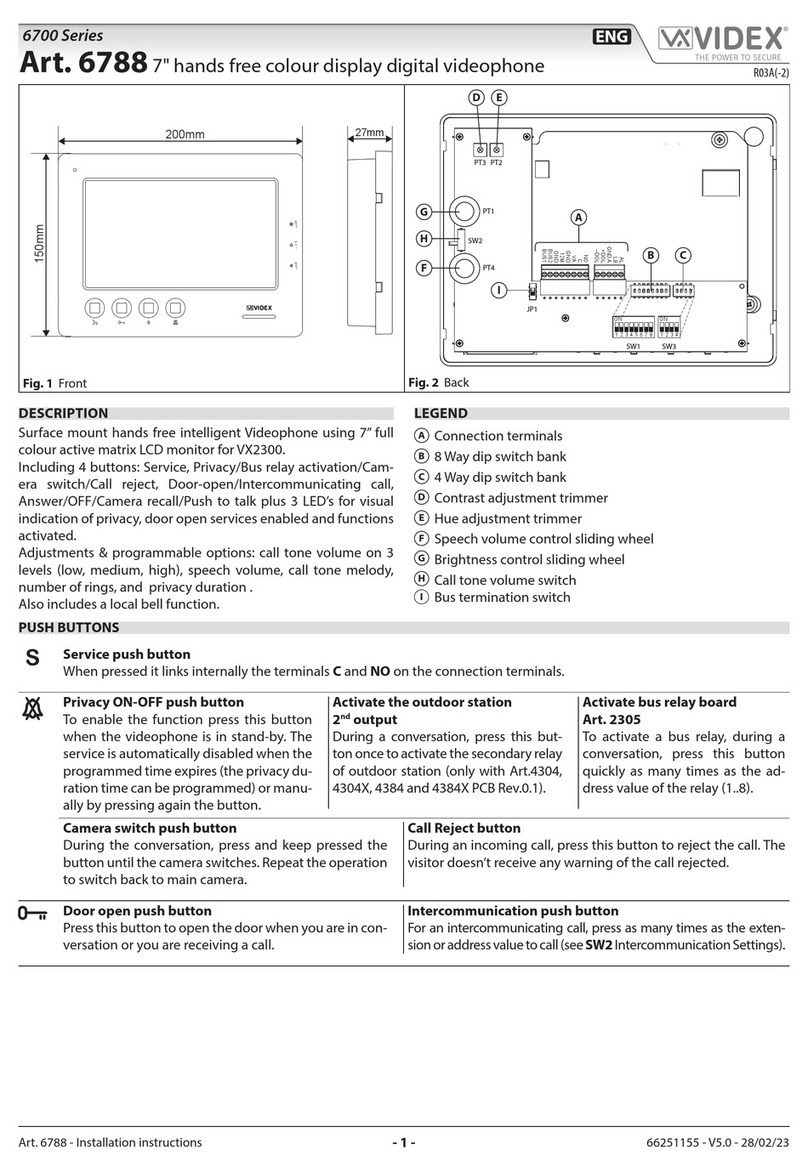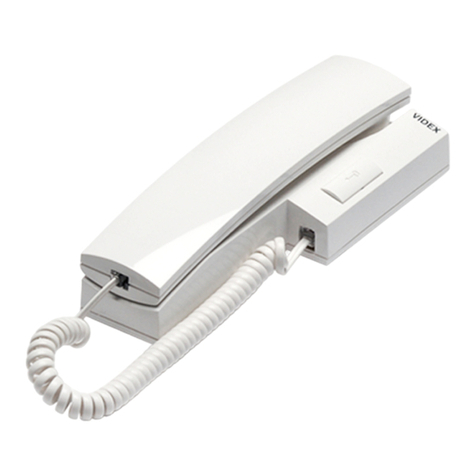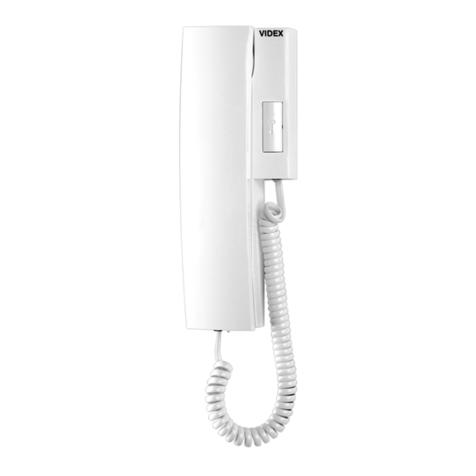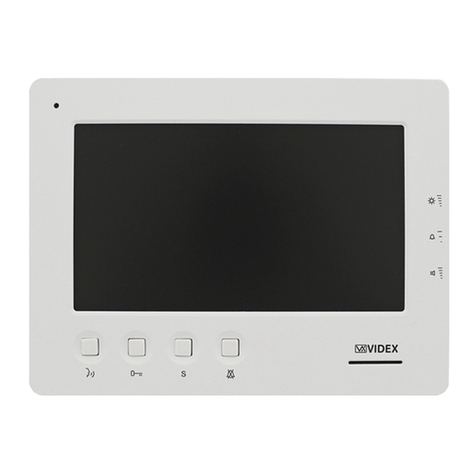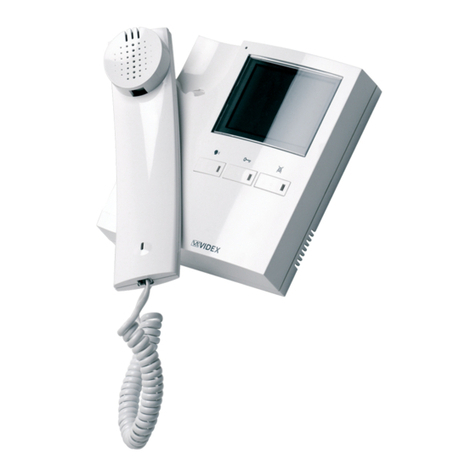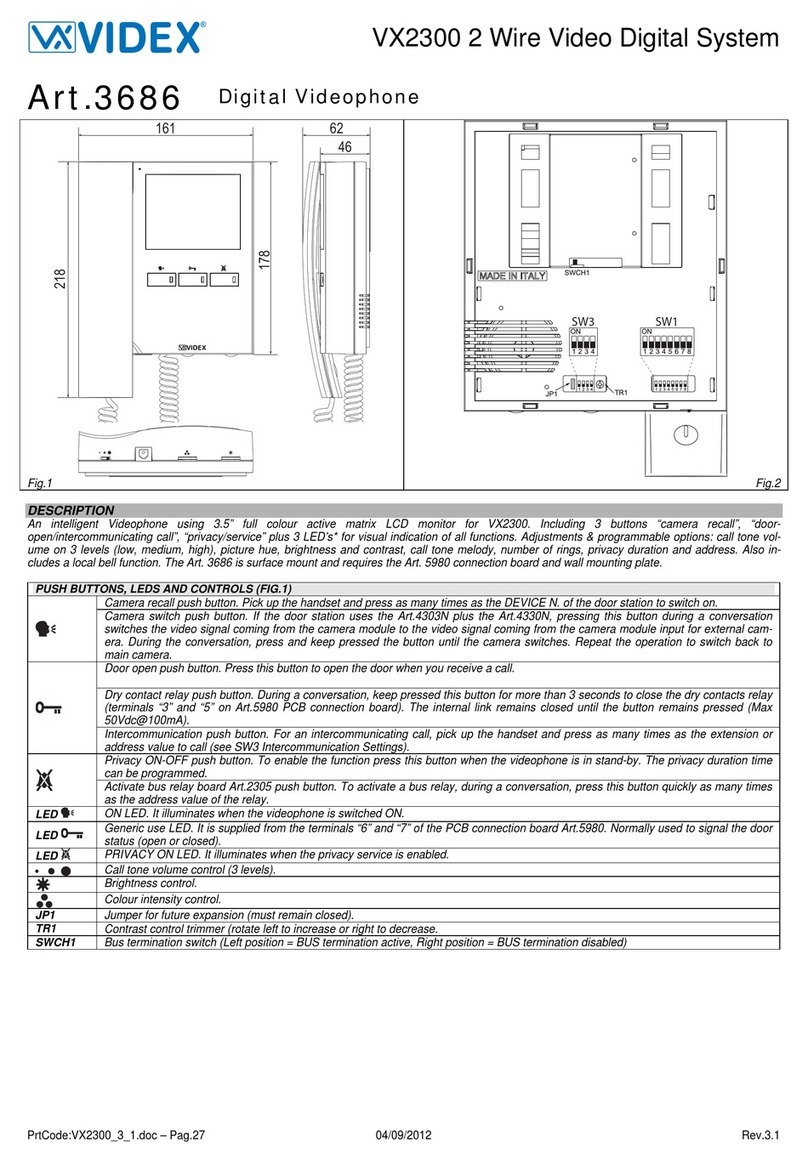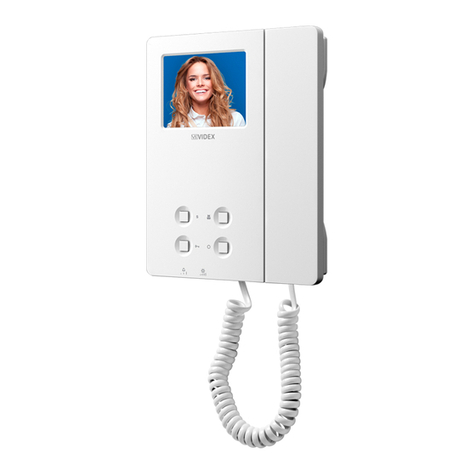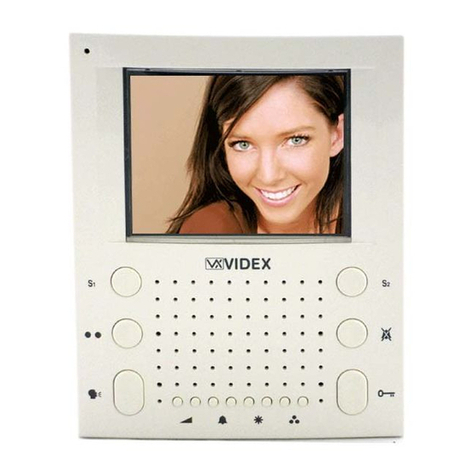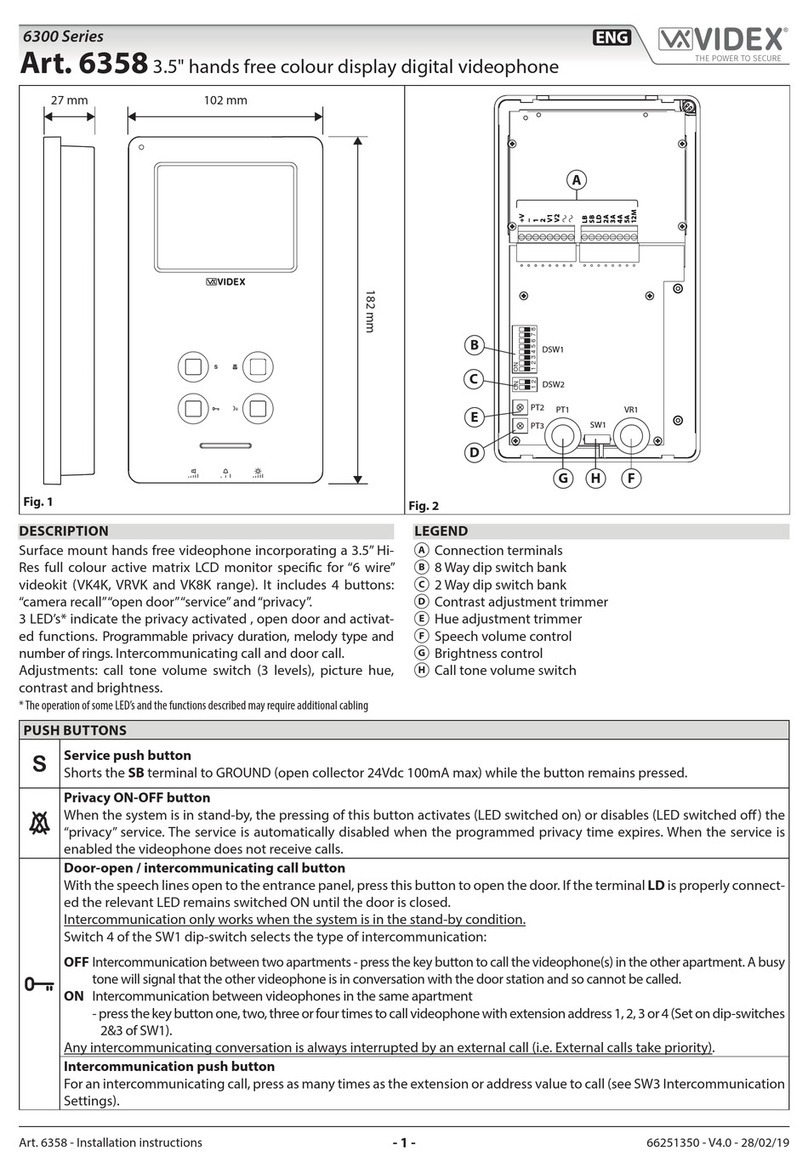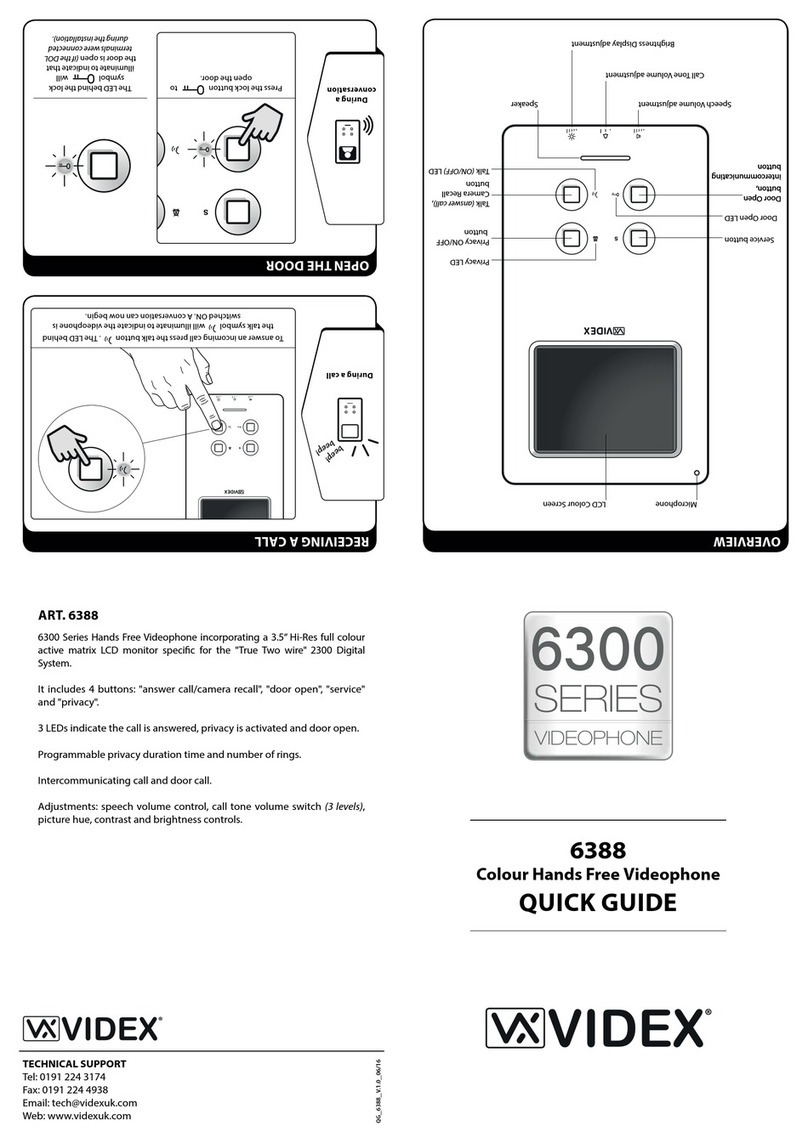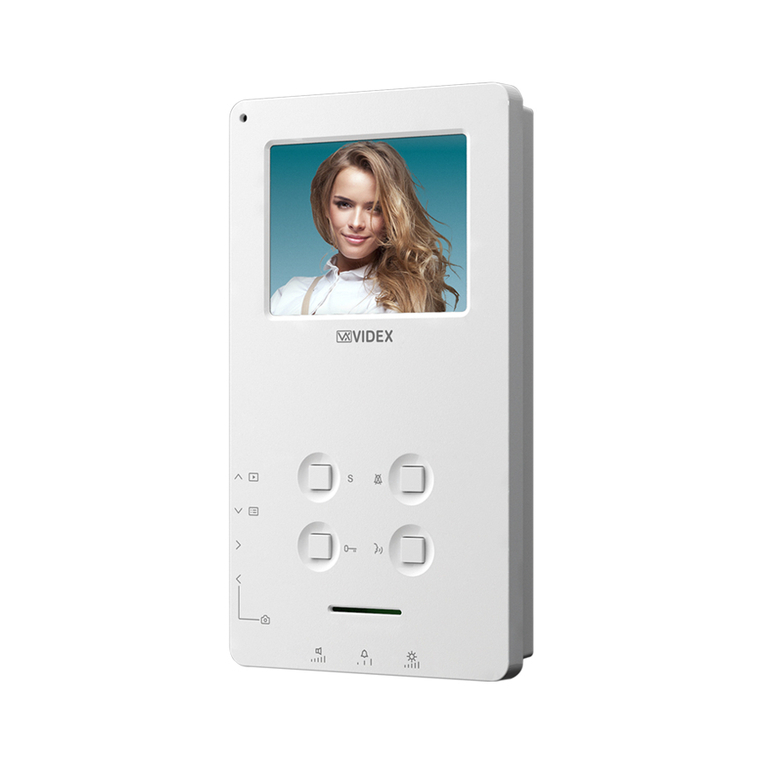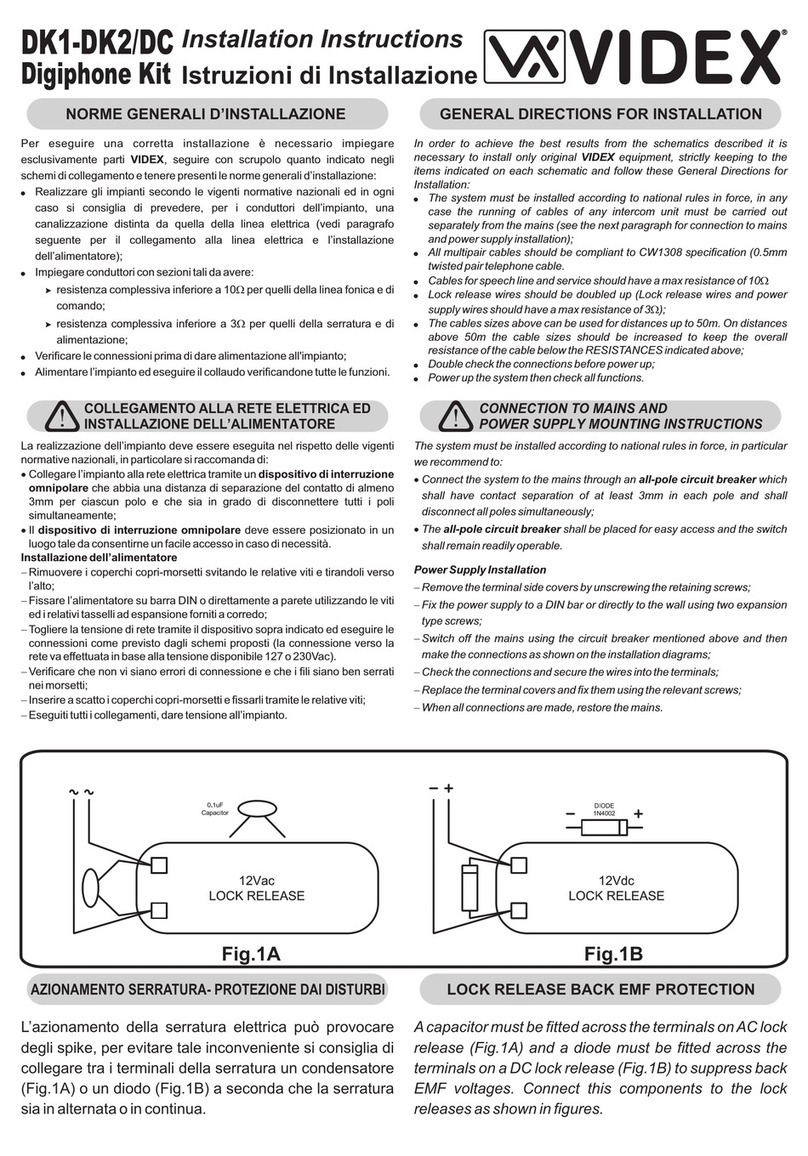16
1. During a call, press this button to reject the call.
2. When the system is in stand-by, short pressing of this
button enables / disables the privacy service. The rele-
vant LED will illuminate when the privacy service is ena-
bled. When privacy is enabled calls will not be received.
3. When the system is in stand-by, press this button until
the videophone switches on emitting a beep to enter into
the programming menu that allows to set the privacy du-
ration, the call tone volume, the melody selection, the
number of rings and the door opening time.
4. During a conversation, press this button to enter the ad-
justment menu that allows to set the speech volume, the
brightness, the contrast and the hue.
1. Premere questo pulsante durante la ricezione di una
chiamata per rifiutare la chiamata.
2. Quando il sistema è in stand-by, una rapida pressione di
questo pulsante abilita / disabilita il servizio privacy. Il re-
lativo LED si accende quando il servizio è attivo. Con il
servizio attivo le chiamate non vengono ricevute.
3. Quando il sistema è in stand-by, premere e tenere pre-
muto questo pulsante fino a che il videocitofono si ac-
cende emettendo un bip per entrare nel menù di pro-
grammazione. Il menù permette di impostare la durata
della privacy, il volume del tono di chiamata, la suoneria,
il numero di squilli e il tempo di apertura porta.
4. Durante una conversazione, premere questo pulsante
per entrare nel menù di regolazione che permette di im-
postare il volume della fonia, la luminosità, il contrasto e
la saturazione.
Controls & Programming
The adjustments and settings are carried out through the two OSD menus
that are described below. For video mode setup (coax or balanced) oper-
ate the 4 way dip switch on the rear side of the videophone.
The videomonitor has two different menus for programming and adjust-
ment functions:
1. One menu operates when the system is in stand-by and allows to
set:
The privacy duration;
The melody volume;
The melody type;
The number of rings;
The door opening time;
2. The second menu operates when the system is turned ON (during a
conversation or a camera recall) and allows to set;
Speech volume;
Brightness;
Contrast;
Hue;
Menu 1
When the system is in stand-by (monitor turned OFF) press and hold
pressed the “ ” button until the monitor switches emitting a beep to
enter the programming menu;
The OSD menu appears on the display: the top of the screen shows
“menu” followed by the available function icons, the bottom of the
screen shows the currently selected function value on the left, the
currently selected function icon in the middle and the next function
icon on the right side.
The first function available is the privacy duration (max 20 hours):
press as many times or hold pressed the “ ” button to increase or
the “ ” button to decrease the duration of a half an hour each step
(signalled by a beep).
Press the “ ” button to store the new value and to enter the following
programming function.
The second function is the melody volume: press as many times or
hold pressed the “ ” button to increase or the “ ” button to de-
crease the melody volume level (signalled by a beep).
Press the “ ” button to store the new value and to enter the following
programming function.
The third function is the melody type: press the “ ” button to hear
and select the previous melody or the “ ” button to hear and select
the following melody.
Press the “ ” button to store the new value and to enter the following
programming function.
The fourth programming function is the number of rings (max 9):
press as many times or hold pressed the “ ” button to increase or
the “ ” button to decrease the number of rings.
Press the “ ” button to store the new value and to enter the following
programming function
The fifth programming function is the door opening time (max 99 se-
conds): press as many times or hold pressed the “ ” button to in-
crease or the “ ” button to decrease the number of rings.
Press the “ ” button to store the new value and exit the programming
menu, the monitor turns OFF.
Regolazioni e Programmazioni
Le possibili regolazioni ed impostazioni vengono effettuate tramite i due
menù OSD di seguito descritti. Per la modalità video (coassiale o bilancia-
to) l’impostazione avviene tramite il dip-switch a 4 vie presente sul retro
del videocitofono.
Il videocitofono ha due differenti menù per operazioni di programmazione
e regolazione:
1. Un menù viene attivato dalla condizione di stand-by e consente di
impostare:
La durata della “privacy”;
Il volume della suoneria;
Il tipo di suoneria;
Il numero di squilli;
Il tempo di apertura porta;
2. Il secondo menù è accessibile quando il videocitono è in funzione
(durante una conversazione o auto-accensione) e consente di impo-
stare:
Il volume della fonia;
La luminosità;
Il Contrasto;
La saturazione;
Menù 1
Per entrare nel menù di programmazione, con il sistema a riposo
(monitor spento), premere e tenere premuto il pulsante “ ” fino a che
il videocitofono non si accende emettendo un bip.
Il monitor si accende mostrando il menù OSD: la parte superiore del-
lo schermo riporta la scritta “menù” seguita dall’icona della funzione
selezionata mentre la parte inferiore indica a sinistra il valore della
funzione selezionata, al centro l’icona della funzione selezionata e a
destra l’icona della successiva funzione disponibile.
La prima programmazione è la durata della privacy (massimo 20
ore): premere ripetutamente o tenere premuto il pulsante “ ” per
incrementare o il pulsante “ ” per decrementare la durata di mezzo-
ra ad ogni step (segnalato da un bip).
Premere il pulsante “ ” per memorizzare il nuovo valore e accedere
alla programmazione successiva.
La seconda programmazione è il volume della suoneria: premere
ripetutamente o tenere premuto il pulsante “ ” per incrementare o
il pulsante “ ” per decrementare il volume della suoneria ad ogni
step (segnalato da un bip).
Premere il pulsante “ ” per memorizzare il nuovo valore e accedere
alla programmazione successiva.
La terza programmazione è il tipo di suoneria: premere il pulsante
“” per ascoltare e selezionare la suoneria precedente o il pulsan-
te “ ” per ascoltare e selezionare la suoneria successiva.
Premere il pulsante “ ” per memorizzare il nuovo valore e accedere
alla programmazione successiva.
La quarta programmazione è il numero di squilli (max 9): premere
ripetutamente o tenere premuto il pulsante “ ” per incrementare o
il pulsante “ ” per decrementare il numero di squilli.
Premere il pulsante “ ” per memorizzare il nuovo valore e accedere
alla programmazione successiva.
La quinta ed ultima programmazione è il tempo d’apertura porta (max
99 secondi): premere ripetutamente o tenere premuto il pulsante
“” per incrementare o il pulsante “ ” per decrementare il numero
di secondi.
Premere il pulsante “ ” per memorizzare il nuovo valore e uscire dal-
la programmazione, il videocitofono si spegne.
